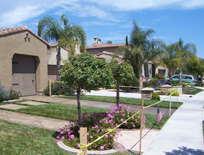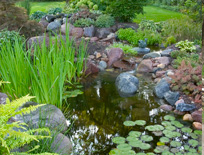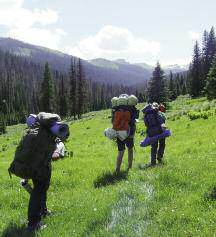ARTICLES
Advance Search
Aquatic Health
Aquatic Health, Fitness & Safety
Around the Internet
Aquatic Culture
Aquatic Technology
Artful Endeavors
Celebrity Corner
Life Aquatic
Must-See Watershapes
People with Cameras
Watershapes in the Headlines
Art/Architectural History
Book & Media Reviews
Commentaries, Interviews & Profiles
Concrete Science
Environment
Fountains
Geotechnical
Join the Dialogue
Landscape, Plants, Hardscape & Decks
Lighter Side
Ripples
Test Your Knowledge
The Aquatic Quiz
Other Waterfeatures (from birdbaths to lakes)
Outdoor Living, Fire Features, Amenities & Lighting
Plants
Ponds, Streams & Waterfalls
Pools & Spas
Professional Watershaping
Structures (Editor's Notes)
Travelogues & History
Water Chemistry
WaterShapes TV
WaterShapes World Blog
Web Links
Around the Internet
Aquatic Culture
Aquatic Technology
Artful Endeavors
Celebrity Corner
Life Aquatic
Must-See Watershapes
People with Cameras
Watershapes in the Headlines
Among contractors, it’s not unusual to find those who don’t think much of their counterparts in other trades. That seems a bit sad, really, but there’s a reason for it: All too often, you run into situations in which
Whether you’re installing a small residential watergarden or a large commercial pond, the key to producing one that is both natural-looking and easy to plant is largely determined by how you design
Whenever I work with clients who want to make an artistic statement with their watershape or landscape designs, I commonly start by asking, “What’s your inspiration?” That simple question cuts right to the heart of the matter: It prompts them to discuss their memories, preferences, influences and tastes while also encouraging them to think in artistic and even emotional terms about what they want. This gets them excited about the process – and gives me some much-needed
Despite our fondest desires, it’s quite inevitable that most of the things we humans design and build are impermanent and will change. That’s particularly true of the greenery we place in and around our gardens and watershapes, simply because plants grow and gradually alter the settings they surround or inhabit. There’s a measure of melancholy in this evolution: As designers and installers of these spaces, we’re left to recognize that in most cases we will never see them at their best and most beautiful. Yet that’s as it should be, because any living work of art will continue to develop and improve long after it is technically “completed” by our hands. There’s also great joy in creating naturalistic watershapes and garden spaces, because I see the art of finishing as an exercise in setting the table for the future. In fact, I see this as being remarkably empowering: By participating in
For professionals who tirelessly commit themselves to excellence in all aspects of their work, challenging projects are the butter on the bread. At Drakeley Swimming Pool Co. of Bethlehem, Conn., we truly enjoy jobs with higher-than-usual degrees of difficulty because they generally involve us with clients who have strong ideas about what they want, force us to develop solutions to unique and interesting problems and see us perform on a level that invariably makes us proud. As we see it, these jobs are the reward we get for years of focusing on doing our absolute best. True, these projects can be tough, but we’ve found that by sticking to our “quality without compromise” philosophy, we’ve managed to thrive through tough times and have always earned our share of interesting commissions. It’s proof of the old adage that good things follow hard work, even in a soft economy. That was certainly
When Chicago Botanic Garden opened its gates in 1972, those on hand faced the same situation as those who come today: They will never see nor experience the garden alike on any two occasions. For decades, we have personally and carefully watched this remarkable property grow. Along the way, we’ve have shared some of the most profound experiences we’ve ever had in our lives: Both the water elements and the gardens constantly conspire (in the literal sense of the word), breathing as one to create spaces of remarkable beauty, tranquility and diversity. It is truly our slice of heaven on earth. For years now, we have visited the Garden almost every week to refuel our bodies and refresh our minds. We’ll generally start with a light lunch at the Garden Café, sometimes in the company of a client or with work materials we enjoy discussing in this stimulating environment. Part of the joy we experience comes from
Looking beyond standard modes of operation is nothing new for watershapers: It’s how many of us grow professionally. In my case, for example, I’ve moved in a variety of different directions in my career, and I’ve found that each of these endeavors has added substance and insight to both my business and professional acumen. Some experiences are more valuable than others, of course, but I’ve always found something positive and a few times have watched my business transform and grow before my eyes. Looking back, it’s been quite a journey. I began my career more than 20 years ago with
Every time I open a landscape trade magazine, I’m bombarded by ads from just about every paver manufacturer on the planet. From the newest faux-stone concrete pavers and ADA-compliant bricks to granite, flagstone, mica and other slab species, we have more choices than ever before for our projects. Some professionals approach this wealth of possibilities and play it safe – not caring so much about what’s the latest and greatest but focusing instead on what’s most familiar and time-tested and being interested in little more than providing clients with surfaces that can safely be walked on. Fortunately, however, there are lots of us who take a different view, putting care and thought into the materials we select for our walkways, patios and terraces and working closely with our clients to make certain the resulting surfaces meet their needs. In other words, there’s
These days, it seems natural for people to be reluctant to take risks. We are, after all, still feeling the effects of a severe recession, and lots of folks are hunkered down, saving their pennies and waiting for something good to happen. I completely understand this conservative impulse, especially on the business front, but it’s also obvious to me that if we’re going to take the necessary steps to return to more prosperous times, then we as individuals, as an industry and even as a society will at some point need to start
Before attending the American Society of Landscape Architects’ Expo in Chicago last fall, I arrived in town a couple days early to spend some quality time with my great friends and long-time WaterShapes contributors Suzanne and Ron Dirsmith, who live and work in Oak Park, a suburb famous for a number of Prairie-style homes designed by Frank Lloyd Wright. The Dirsmiths, of course, are accomplished artists in their own right, having distinguished themselves with their work on






















